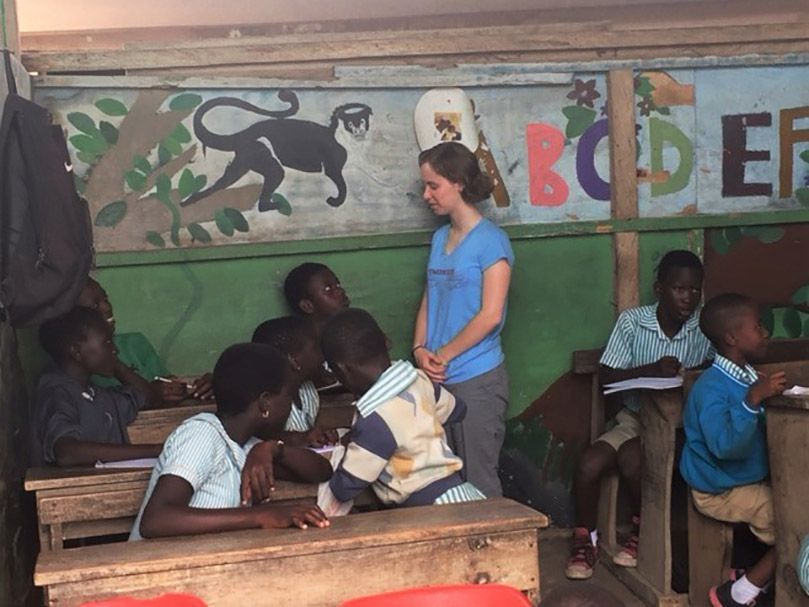The Future Leaders of Today, Yesterday
When the main group, 26 high schoolers strong, split into their various service factions under each program leader, Steve Squadron headed all the way to the neighborhood of Teshie. It was here that they found Future Leaders, a fantastic organization born under a mango tree with five students and a local teacher named Billa. From there, it blossomed into a school for disadvantaged kids and orphans who would otherwise not be able to get an education.
The bright-eyed teenagers (ha ha, just kidding, they got up early) immediately gathered to witness the school’s opening ceremony, where new teachers were initiated and new volunteers were welcomed. Freshly admitted to the ranks of local Ghanaian educators, each member of the group was assigned to classrooms for their trial by fire and child germs.
Our students-become-teachers entered rooms chock-full of kids ranging from age 5 to 16 and co-led with local instructors teaching subjects ranging from math, science, and cultural lessons about life in the US and the new volunteers themselves. Here, at a non-profit school in a low-income neighborhood in a West African city, our students acclimated remarkably well, stepping up to the tasks thrown in front of them, already exclaiming “We never want to leave!” in the sort of desperate euphoria that makes a program leader grin.
Within two days so full that they may have broken the space-time continuum, our students began finding traction, a groove, a smooth open gutter, if you will. They began learning the routine, names, learning levels, problem students, dances, hand gestures, and how the alphabet is pronounced here (don’t “zee” when you should “zed”).
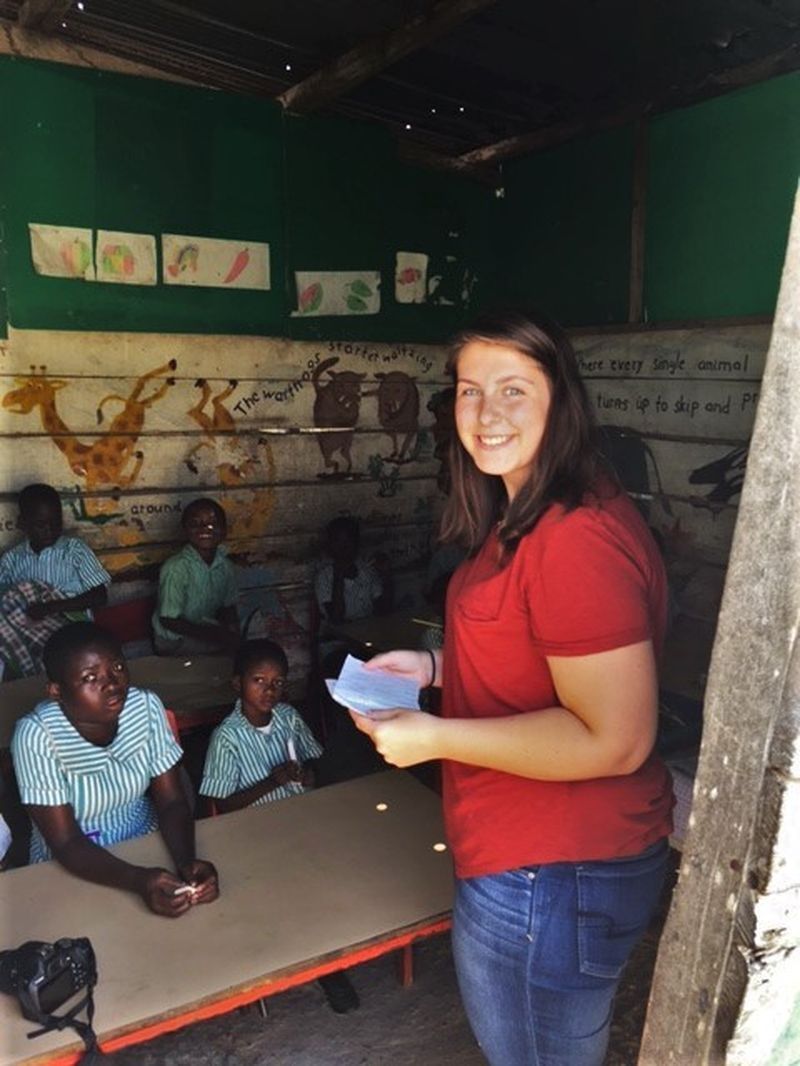
In addition to sharpening young, hysterical minds, our students also started doing their own Leadership class. In a bright, roomy classroom, they do their best to stay sharp themselves after a half-day of being jumped on, clung to, and questioned a bazillion times. They did an activity called “SNAFU Party” designed to light-heartedly raise their awareness about non-verbal communication in settings where everyone has a different standard (turns out it’s hard to maintain a standard of offishness when someone else is assigned to hug you).
Worn out from both sides of learning, we all plodded over to a breezy restaurant for refueling last night. Brady, Kayla, and Steve—eager to move from the Americanized buffets that had been easing the kids into Ghanaian food—ordered their precious fufu.

Fufu [foo-foo] n.
A gelatinous blob made from plantains and cassava pounded in a giant mortar with a wooden stick that could be used in American Gladiators until it’s smooth like dough, but dense enough to end a bar fight, that is subsequently dropped into one of several soups with a side of meat and eaten with only the right hand.
Two students were brave enough to order the strange, traditional food of the Ashantis: Elise and Angelina. And they crushed those sticky starch balls.
Tomorrow begins the weekend, where we’ll relax and go faster. Stay tuned.
Brady, Steve, and Kayla
Related Posts
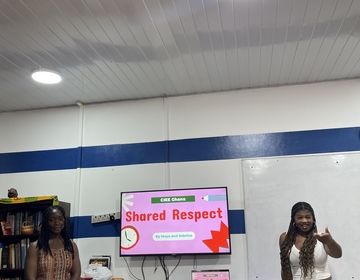
Student Project: Shared Respect
During this program, the participants worked in groups to create projects reflecting their experiential learning from the last three weeks. The following is a selection from Sabrina Addo and Maya... keep reading
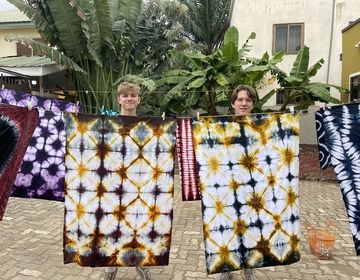
Tying Up Loose Ends
With only a few days left in our program, we are embracing every opportunity to make lasting memories and reflect on our incredible journey. One of the highlights of this... keep reading
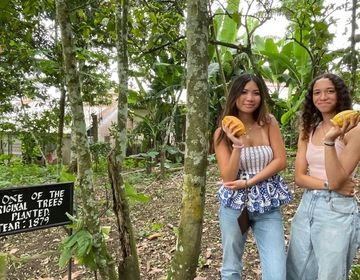
Visiting Ghana’s First Cocoa Farm
Student Blog Takeover: Milo and Anthea visit Ghana's first cocoa farm
